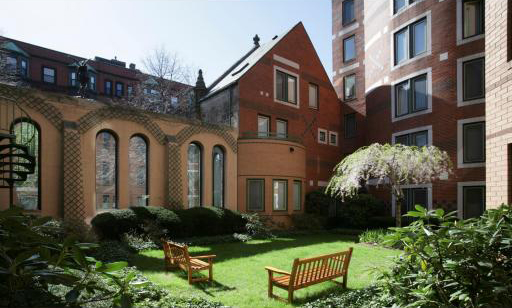The Boston Globe has published a story on the transformation of city churches that are no longer churches into high-end condominium developments:
The struggles of the Catholic Church, in particular, have left many residential areas pocked with deconsecrated houses of worship. With open parcels scarce and Boston’s real estate market hotter than ever, these churches are increasingly attractive as condominium developments.
But tinkering with the old and the holy, it turns out, comes with a particular set of challenges.
In most cases, it’s more expensive to keep the building and renovate it, but tearing down an old church, with its memories, history and heritage, can raise an uproar.
“Anybody who goes into a neighborhood and buys a church, without having some knowledge and sensitivity, they’re asking for trouble,” said Boston developer Bruce Daniel, who spent years fighting South Boston residents on his plan to put condos on the site of the closed St. Augustine’s Church.
Daniel originally proposed demolishing St. Augustine’s and erecting a new building, a plan he now admits was not realistic.
“It made more economic sense to knock it down, but we knew that wouldn’t happen,” he said. “We weren’t surprised when the neighbors said no. There’s a lot of sentimental feeling about that building.”
In the suburbs, it’s more likely a church will be torn down, but in the city, a number of projects are complete or under way, including Saints Peter and Paul Catholic in South Boston, whose renovation included the addition of skylights and balconies in the roof.
Architect Graham Gund is interviewed in the story:
Gund’s celebrated 1983 Church Court project in the Back Bay became a model for later church conversions. His design tastefully incorporated the stone ruins of the burned Mount Vernon Church, near Massachusetts Avenue and Beacon Street, into a mostly new condo complex with sweeping views of the Charles River.
Renovation has been important to Gund since he witnessed the demolition of historic buildings and neighborhoods in the 1960s and ’70s.
“These are architecturally significant buildings,” said [Bruce] Daniel, the St. Augustine’s developer. “It adds a lot of character and flavor to the city to keep them around, and I’m all for that — as long as the numbers work.”
Posted by Cara Ellen Modisett

